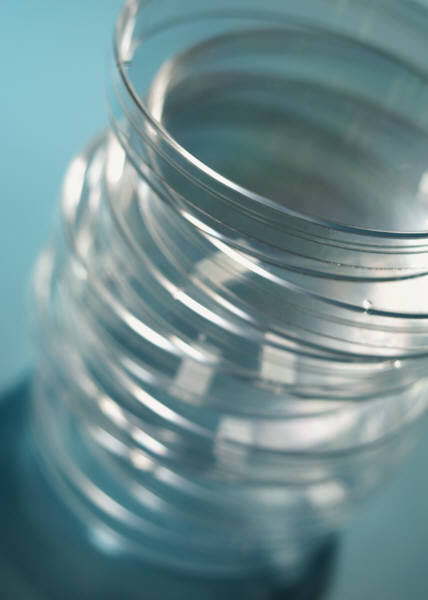About This Site
This site was created as an assignment for my organismal biology class in Spring of 2008. We were required to create a webpage on any organism of our chosing.
Contact Information
Thought the site was cool? Have extra information? Think there needs to be a correction? Please contact me!!!!
arnold.meag@students.uwlax.edu
Special Thanks!
I want to take this time to send a special thanks out to Michael Daly for the use of his pictures and all of the amazing research he provided me with. Also, Dennis Kunkel graciously allowed me the use of his electron micrographs. Dr. Bonnie Bratina went out of her way to provide me with pictures from her trip to Antarctica. Of course, the website would not have been created with the help Dr. Volk and Dr. Sandland.
About The Author
My name is Meagan Arnold and I am a junior at the University of Wisconsin-LaCrosse. I am a biomedical science major with a chemistry minor. My roots lie in the small farming town of Evansville, WI. Like the vast majority of college students my future plans are up in the air. Whether it be medicine, physical therapy, or research, my love of learning science is unwavering. Other passions of mine are quite diverse. Baking, playing trumpet, swimming, running, friends, and family occupy much of my time, sometimes more than they should :). I am best at procrastination and pride myself on my ability to bake an amazing apple pie.
Why Deinococcus?
So your probably wondering out of every
organism on t his
planet, why would I choose Deinococcus radiodurans? In my introduction to microbiology
class, it was required to learn
a whole host of
microorganisms. Deinococcus radiodurans always stuck out to me. I
mean, come on, it can survive the ionizing radiation of nuclear waste, does it
get much cooler than that?
his
planet, why would I choose Deinococcus radiodurans? In my introduction to microbiology
class, it was required to learn
a whole host of
microorganisms. Deinococcus radiodurans always stuck out to me. I
mean, come on, it can survive the ionizing radiation of nuclear waste, does it
get much cooler than that?
Literature Cited
Battista, J. R. 1997. Against All Odds: The Survival Strategies of Deinococcus radiodurans. Annual Review of Microbiology. 51:203-224.
Blasius, Melanie, Rebecca Buob, Igor V. Shevelev, and Ulrich Hubscher. 2007. Enzymes Involved in DNA Ligation and End-Healing in the Radioresistant bacterium Deinococcus radiodurans. BMC Molecular Biology. 8:69.
Boone, David R., and Richard W. Castenholz. 2001. Bergey's Manual of Systematic Bacteriology 2nd Ed. Springer-Verlag. New York, New York, USA.
Brim, Hassan, Jeffrey P. Osbourne, Heather M. Kostandarithes, James K. Fredrickson, Lawrence P. Wackett, and Michael J. Daly. 2006. Deinococcus radiodurans Engineered for Complete Toluene Degradation Facilities Cr(VI) Reduction. Microbiology. 152:2469-2477.
Brim, Hassan, Sara C. McFarlan, James K.
Fredrickson, Denneth W. Minton, Min Zhai,
Dennis Kunkel Microscopy, Inc. 2007. <URL:http://www.denniskunkel.com>. Accessed 14 April, 2008.
Gross, Michael. 1998. Life on the Edge: Amazing Creatures Thriving in
Extreme Environments. Plenum Press,
Holloman, William K., Jan Schirawski, and Robin Holliday. 2007. Towards Understanding the Extreme Radiation Resistance of Ustilago maydis. Trends in Microbiology. 15:525-529.
Madigan, Michael T, John M. Martinko, Paul V. Dunlap, and
David P. Clark. 2009. Brock Biology of Microorganisms 12th
ed. Pearson Education Inc.,
Mattimore, Valerie and John R. Battista. 1996. Radioresistance of Deinococcus radiodurans: Functions Necessary to Survive Ionizing Radiation are Also Necessary to Survive Prolonged Desiccation. Journal of Bacteriology. 178: 633-637.
Omelchenko, Marina V., Yuri I. Wolf, Elena K. Gaidamakova, Vera T. Matrosova, Alexander Vasilenko, Min Zhai, Michael J. Daly, Eugene V. Koonin, and Kira Makarova. 2005. Comparative Genomics of Thermus thermophilus and Deinococcus radiodurans: Divergent Routes of Adaptation to Thermophily and Radiation Resistance. BMC Evolutionary Biology. 5:57.
Rainey, Frederick A., Fernanda Nobre, Peter Schumann, Erko Stackebrandt, and Milton S. Costa. 1997. Phylogenetic Diversity of the Deinococci as Determined by 16S Ribosomal DNA Sequence Comparison. International Jounal of Systematic Bacteriology. 47:510-514.
Zhdanova, Nelli N., Tatyana Tugay, John Dighton, Victor Zheltonozhsky, and Patrick McDermott. 2004. Ionizing Radiation Attracts Soil Fungi. Cambridge Journals. 108: 1089-1096.
Zala, Krista. 20 March, 2007. Conan The Bacterium. Sciene NOW Daily News. <URL:http://sciencenow.sciencemag.org/cgi/content/full/2007/320/2>. Access 11 April, 2008.
Zip Code Zoo. 2008. <URL:http://zipcodezoo.com/Key/Deinococci_Class.asp>. Accessed 11 April, 2008.